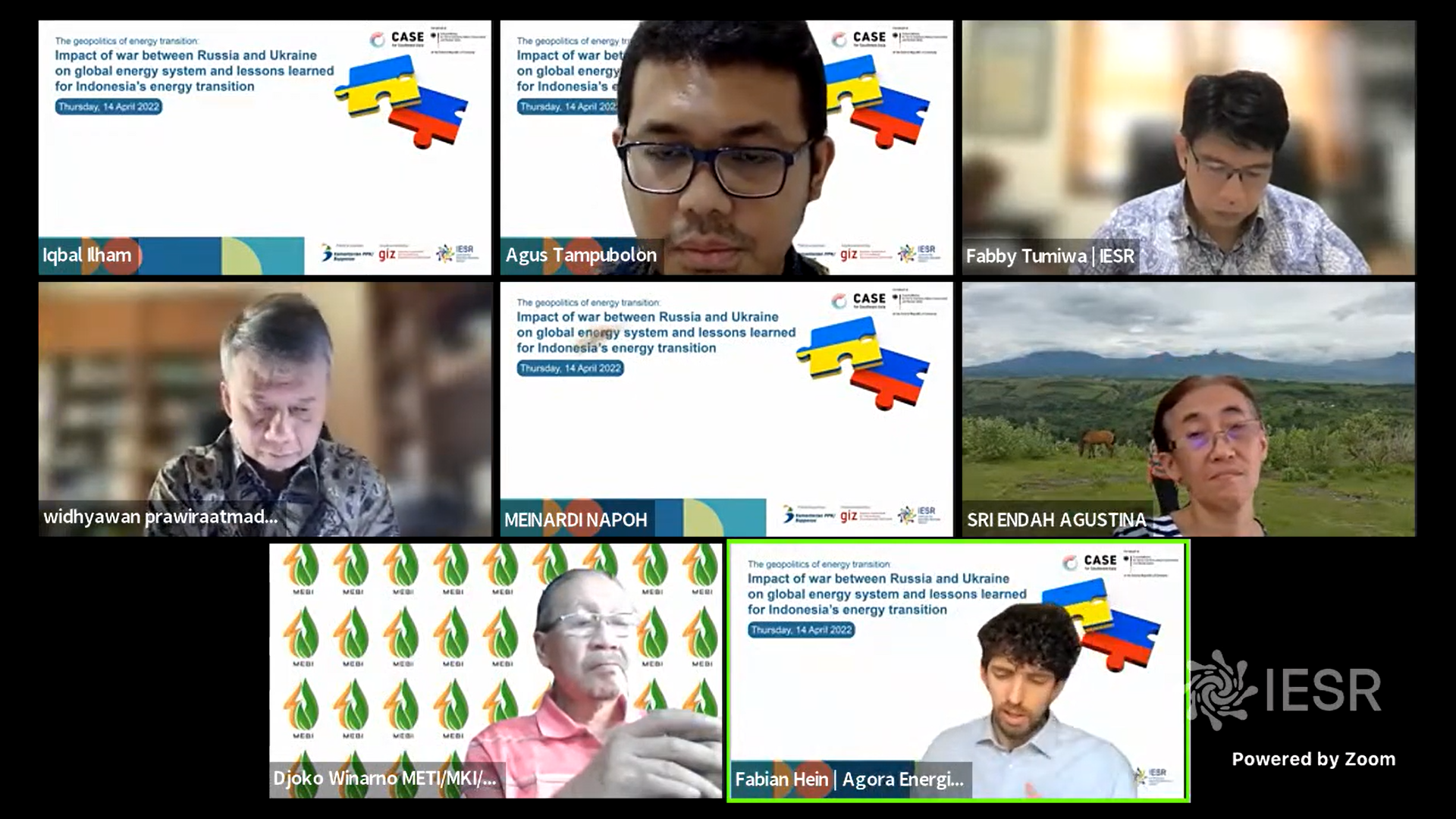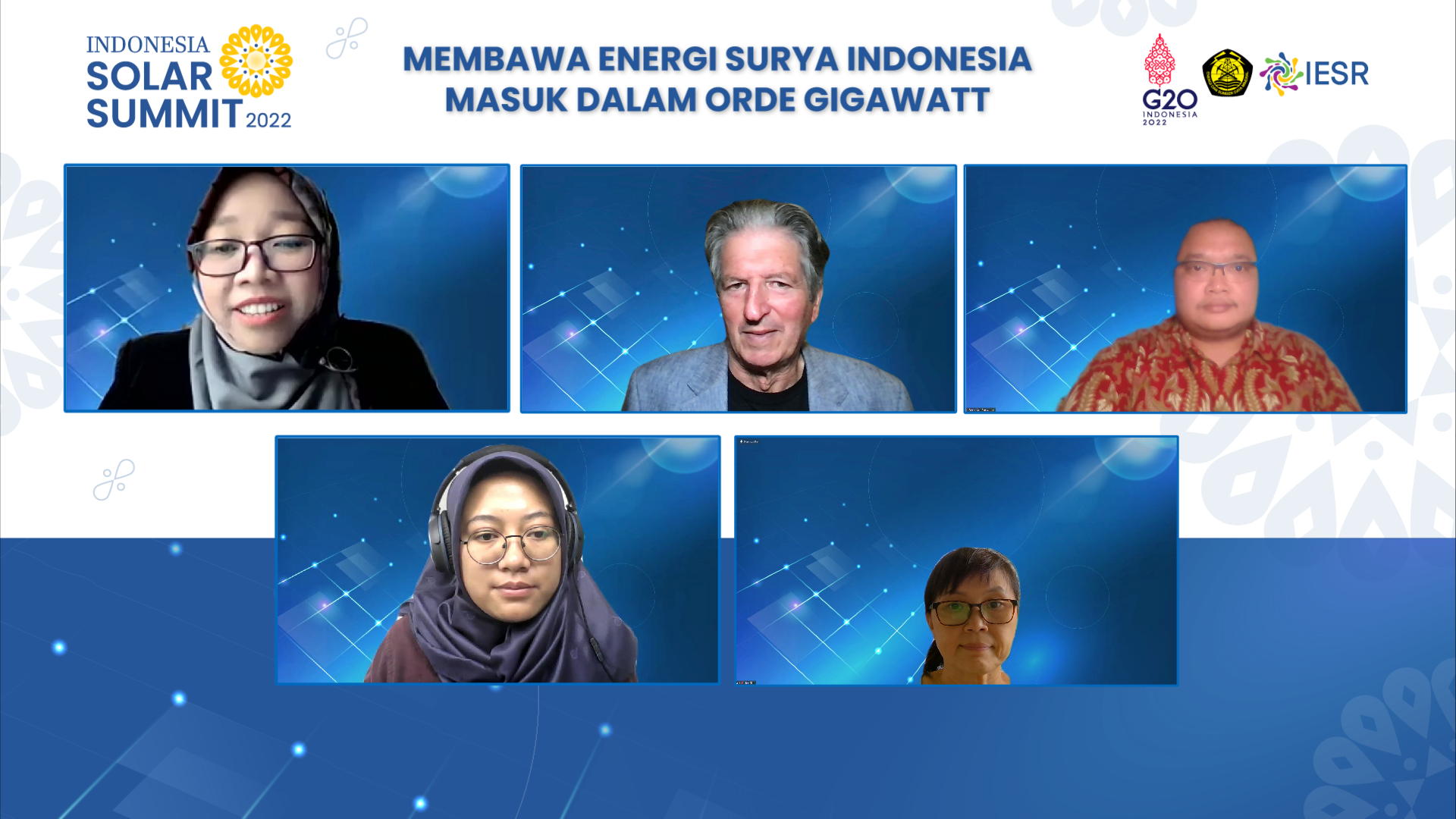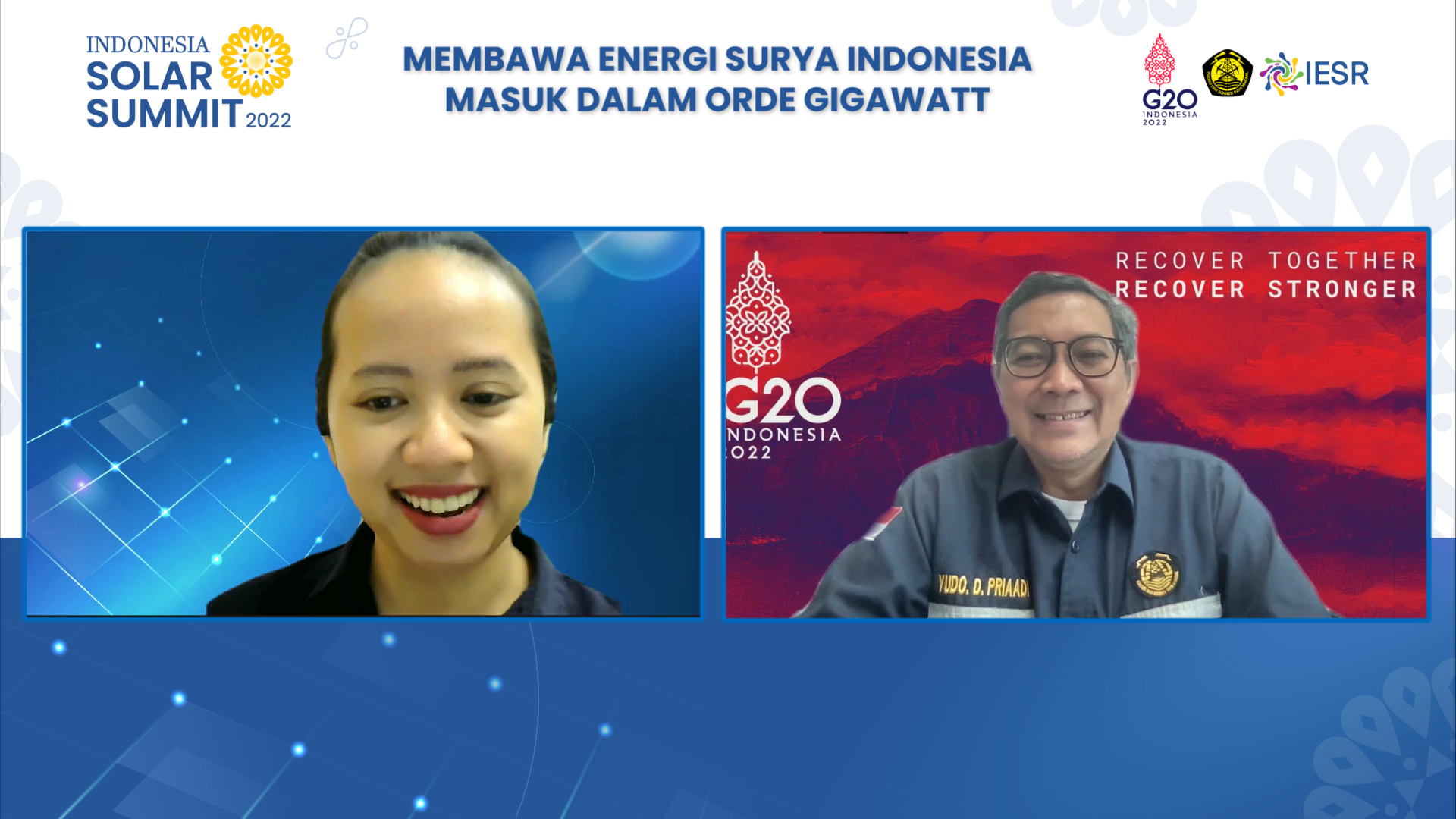Institute for Essential Services Reform (IESR) Executive Director Fabby Tumiwa said that achieving the green energy mix target of 23 percent by 2025 requires additional renewable energy generation capacity of…
The target was stated in the declaration at the "Indonesia Solar Summit 2022" which was held on a hybrid basis, Tuesday (19/4/2022), by the Ministry of Energy and Mineral Resources…
"As for now, the solar capacity that has been built only reach 200,1 megawatt hence, this becomes one of the alternatives that will be pushed and give a positive result,…
Executive Director of Essential Services Reform (IESR) Fabby Tumiwa in the workshop "Indonesia Solar Summit 2022", Wednesday (20/4/2022), said, to achieve gigawatt order, solar energy development must be carried out…

Jakarta, April 14, 2022 - The military conflict involving Russia and Ukraine is still ongoing. A number of direct and indirect impacts have begun to be felt by a number…

Jakarta, 21 April 2022 - The Indonesian government has set a national strategic project to install 3.6 GW of rooftop solar power plants by 2025 to achieve the renewable energy…

JAKARTA, 20 April 2022 - Carrying the energy transition as the main topic of Indonesia's presidency at the G20, Indonesia needs to show its leadership in pursuing a more massive…
